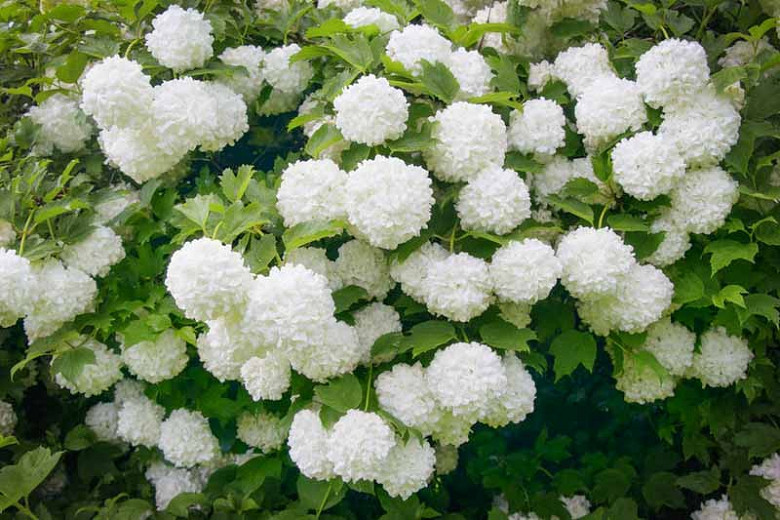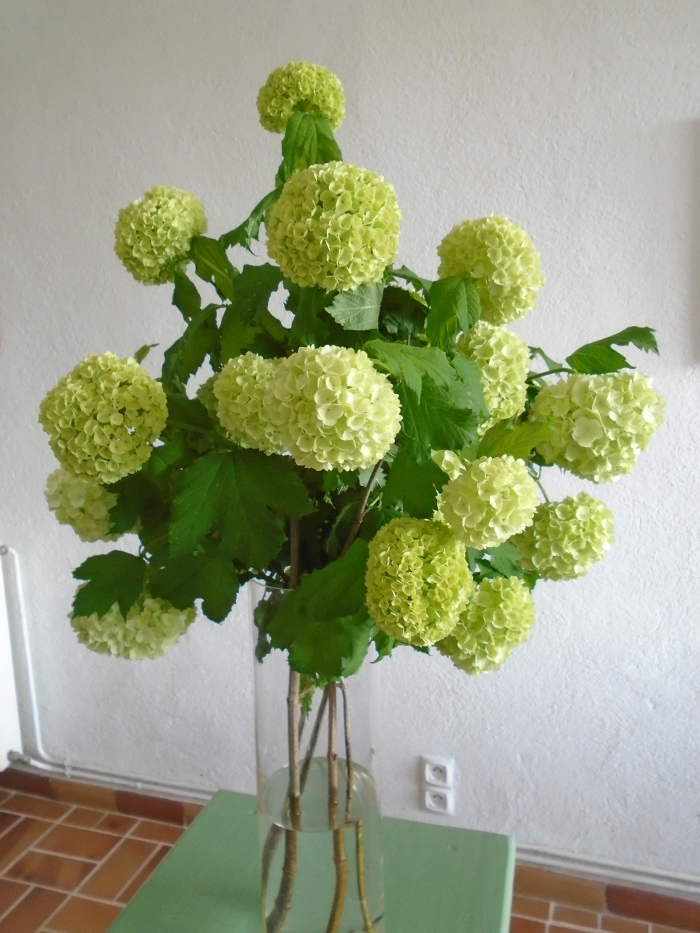Viburnum Opulus Roseum: How To Grow This Beautiful Shrub
Viburnum opulus roseum, commonly known as the snowball bush, is a beautiful and versatile shrub that can add a touch of elegance to any garden. It is known for its large, round clusters of white flowers that bloom in the spring. The flowers are sterile, meaning they do not produce fruit, but they are still very attractive and make excellent cut flowers.
The snowball bush is relatively easy to grow and care for. It prefers full sun to partial shade and moist, well-drained soil. It is tolerant of a variety of soil types, but it does best in acidic soils. The snowball bush is hardy in USDA zones 3-8.
To plant a snowball bush, dig a hole that is twice as wide and as deep as the root ball of the plant. Backfill the hole with soil, tamping it down gently. Water the plant well after planting.
The snowball bush does not require a lot of fertilizer. A light application of fertilizer in the spring will help to promote healthy growth. The plant should be watered regularly, especially during the first year after planting.
The snowball bush is relatively pest- and disease-free. However, it can be susceptible to aphids, scale insects, and powdery mildew. If you notice any pests or diseases on your snowball bush, treat them immediately with an appropriate pesticide or fungicide.
The snowball bush is a deciduous shrub, meaning it loses its leaves in the fall. However, the fall foliage can be quite colorful, ranging from orange to red.
The snowball bush can be pruned in the spring or fall. Pruning is not necessary, but it can help to shape the plant and remove dead or damaged branches.
The snowball bush is a long-lived shrub that can provide beauty and enjoyment for many years. With proper care, it can thrive in a variety of gardens.
Viburnum opulus roseum, also known as the snowball bush, is a beautiful deciduous shrub that is known for its large, white flower clusters. It is a relatively easy plant to care for and can be grown in a variety of soil types and conditions. The snowball bush is also deer-resistant, making it a good choice for gardens in areas with a high deer population.
If you are interested in learning more about viburnum opulus roseum, please visit Home Gardening. This website provides detailed information about the plant, including its care requirements, planting instructions, and pest and disease management tips. You can also find photos and videos of the snowball bush in bloom.
FAQ of viburnum opulus roseum
- What is Viburnum opulus roseum?
- Viburnum opulus roseum is a deciduous shrub that is native to Europe and Asia. It is known for its white, snowball-shaped flowers that bloom in the spring. It is a sterile cultivar, meaning that it does not produce fruit.
- How to care for Viburnum opulus roseum?
- Viburnum opulus roseum is a relatively easy plant to care for. It prefers moist, well-drained soil and full sun to partial shade. It is drought-tolerant once established, but it will benefit from regular watering during the first year after planting. Fertilize it in the spring with a balanced fertilizer.
- To keep your snowball viburnum looking its best, deadhead the spent flowers regularly. This will encourage new blooms. You can also prune it in the spring to shape it or remove any dead or damaged branches.
- What are some common problems with Viburnum opulus roseum?
- The most common problem with snowball viburnum is aphids. Aphids are small, sap-sucking insects that can cause the leaves to curl and the plant to wilt. You can control aphids with insecticidal soap or neem oil.
- Another common problem is powdery mildew. Powdery mildew is a fungus that causes a white, powdery coating on the leaves. You can control powdery mildew by watering the plant at the base and avoiding overhead watering. You can also use a fungicide.
- Is Viburnum opulus roseum poisonous?
- No, Viburnum opulus roseum is not poisonous. However, the berries can be mildly toxic if eaten in large quantities.
- What are some other uses for Viburnum opulus roseum?
- In addition to being an ornamental plant, Viburnum opulus roseum can also be used for medicinal purposes. The leaves and bark of the plant have been used to treat a variety of ailments, including fever, coughs, and diarrhea.
Image of viburnum opulus roseum
10 different images of viburnum opulus roseum that are free to use:
- A close-up of a single viburnum opulus roseum flower. The flower is a large, round pom-pom of sterile white petals.

- A group of viburnum opulus roseum flowers in full bloom. The flowers are clustered together in a large, showy display.

- A viburnum opulus roseum shrub in full leaf. The leaves are a deep green color and have a lobed shape.

- A viburnum opulus roseum shrub in autumn. The leaves have turned a beautiful shade of red and orange.

- A viburnum opulus roseum shrub in winter. The leaves have fallen off, but the shrub's red stems and bark are still visible.

- A viburnum opulus roseum shrub in a garden. The shrub is surrounded by other plants, including flowers and trees.

- A viburnum opulus roseum shrub in a park. The shrub is planted in a large flower bed, and it is surrounded by people enjoying the outdoors.
- A viburnum opulus roseum shrub in a forest. The shrub is growing in the shade of the trees, and it is surrounded by other wildflowers.

- A viburnum opulus roseum shrub in a vase. The shrub has been cut and arranged in a vase, and it is now a beautiful centerpiece for a table.

- A viburnum opulus roseum flower in a close-up. The flower is a beautiful shade of pink, and it has a delicate fragrance.

Post a Comment for "Viburnum Opulus Roseum: How To Grow This Beautiful Shrub"